What to Do With Kimchi
The spicy and tangy pickled cabbage is good for more than just eating straight from the fridge.
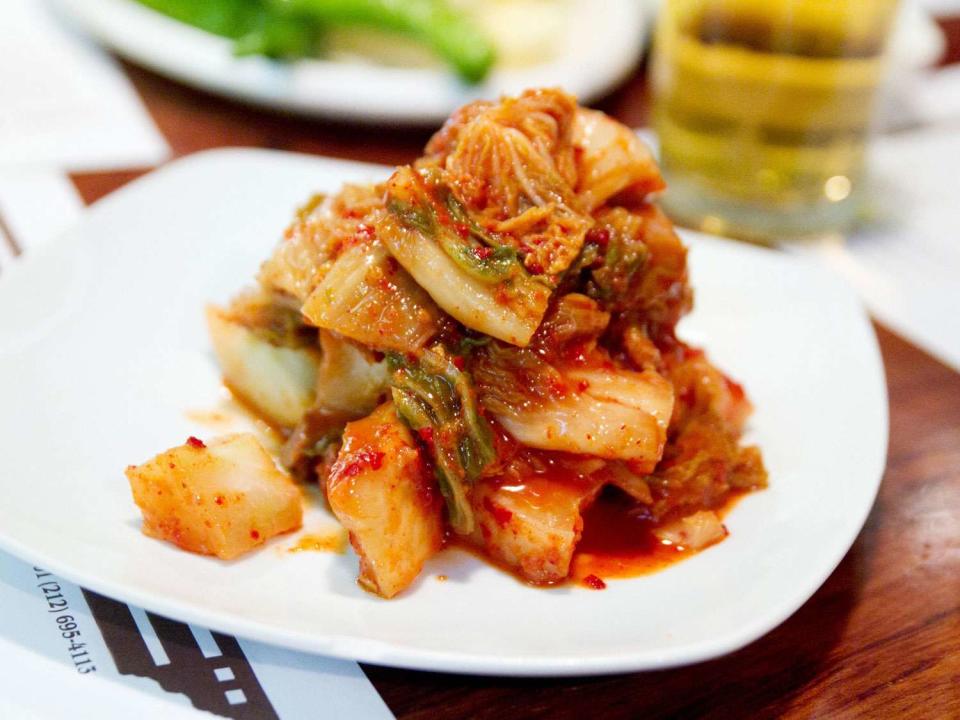
Serious Eats / Robyn Lee
Sometimes, kimchi is the only thing in my fridge that's ready to eat. Because the spicy Korean cabbage* preparation is fermented, it stays good for a very long time, and I buy it in large quantities because I never want to be without a mature (read: stinky) kimchi to pile atop a bowl of hot steamed rice.
*Kimchi technically refers to a frankly stunning range of fermented vegetables—everything from cucumbers and chile peppers to perilla and mustard leaves—but its most widely available and best-known iteration contains Napa cabbage and radish, pleasantly flavored with garlic, ginger, green onion, Korean chile pepper flakes (gochugaru), and salted fish products.
Still, one can only eat so much rice. And I can't count the number of times I've stood with my refrigerator door ajar, fishing out little rectangles of spicy fermented cabbage from the bottom of a glass jar, chewing pungent slivers of radish, and pondering the most existential of questions: "Isn't there more? Is this all there is? What else can I do with kimchi besides eating it straight from the jar while the refrigerator door is open?"
Korean cuisine offers a whole range of dishes that incorporate kimchi and its brining liquid (sometimes referred to as its "juice"), including soups, stews, noodles, and savory pancakes. But don't feel boxed in by its origins, because kimchi's tangy, spicy, and savory notes can go with almost anything.

Serious Eats / Emily and Matt Clifton
Whether you opt for the fishy kinds you can find in stores or make your own vegan version at home, here are some of our favorite ways to make the most of a jar, from the traditional to the unorthodox.
Korean Kimchi Recipes
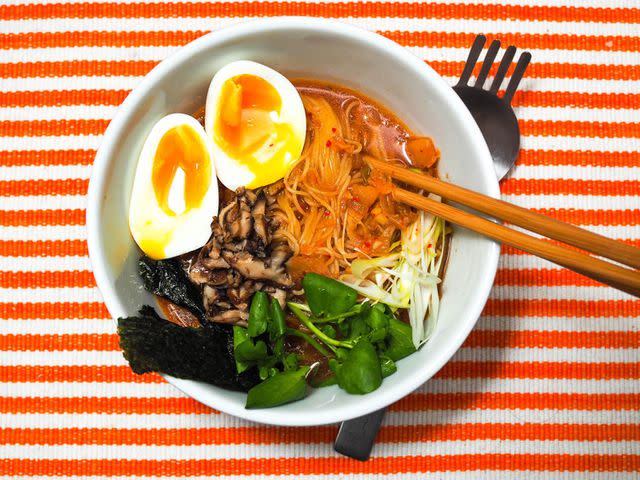
Serious Eats / Daniel Gritzer
A natural first place to look for inspiration is kimchi's homeland. Kimchi can be a star in Korean jjigae (stews), or it can play a bit part, helping to accentuate other ingredients. In our version of soondubu jjigae, or tofu stew, we flavor the base with both sautéed kimchi and its juice. A similar one-two punch of kimchi is crucial in our take on haemul pajeon, or seafood and scallion pancakes: The brine adds extra tart flavor to the batter, while chopped-up kimchi helps bulk out the shrimp and scallions. If you want a recipe that uses just the cabbage—helpful if you're low on brine, or saving it up for one of the two previous recipes—give our stir-fried marinated pork a try. For that dish, we fry the kimchi with onions to provide a savory-and-sour accent to tender strips of meat, infused with flavor from a spicy gochujang-based marinade.
Dressing Up Noodles
As a trip to any local ramen spot will show, kimchi is a beloved topping for noodle fans worldwide. Even if all you have in your cupboard is a package of Shin Ramyun (or, if you're lucky, Shin Black!), as long as you've got a bit of kimchi and an egg in your fridge, you can make yourself a decent meal. With a little advance planning, though (and kimchi), you can do much, much better by constructing your own DIY instant cup noodles, perfect for bringing to the office or just stashing in your fridge for a simple but nourishing weeknight meal. If you've got a little bit more time on your hands, plus some good, gelatinous chicken stock, you could make a kimchi-flavored ramen. And if you're feeling super ambitious, you could make our homemade version of Shin Ramyun.
Adding a Kick to Fried Rice
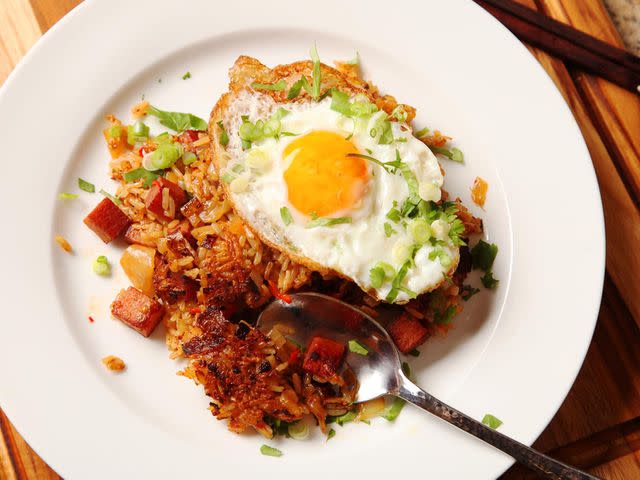
Serious Eats / J. Kenji López-Alt
Kimchi has all the qualities of a perfect add-in for fried rice: It's salty, it's got a unique character, and a quick sear gives it another dimension of flavor. The slight acidity it lends to the overall mix also makes for a more interesting dish. Kenji's primer on fried rice is an essential jumping-off point if you want to learn how to make standout meals from leftovers on a regular basis. But if you want something a little more out there, a little more midnight-snack-friendly, trust us: No matter how you feel about canned meat, this Spam and kimchi fried rice will provide all the salty, savory flavors you could ask for.
Making Familiar Flavors New
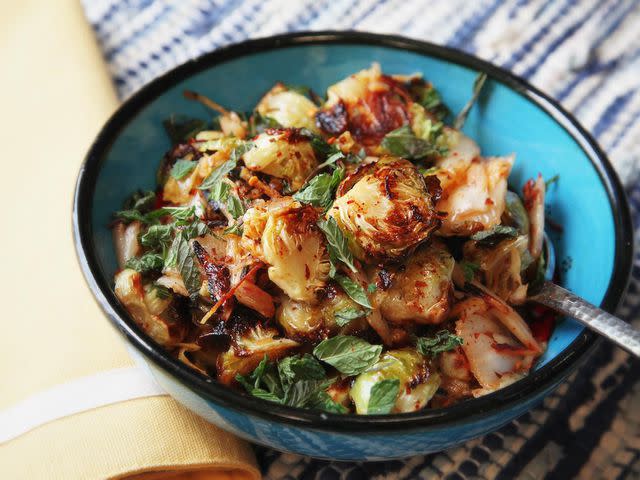
Serious Eats / J. Kenji López-Alt
Remember when I said you can add kimchi to almost anything? Case in point: this grilled cheese sandwich with kimchi. Case in point, part two: this New York–style pizza topped with soppressata and kimchi. For a slightly more considered application, try roasted Brussels sprouts tossed with a sauce of kimchi, ginger, shallots, rice wine vinegar, and fish sauce; and a kimchi chicken salad, which merges the pickle seamlessly into a tangy rendition of the classic.
Topping a Burger
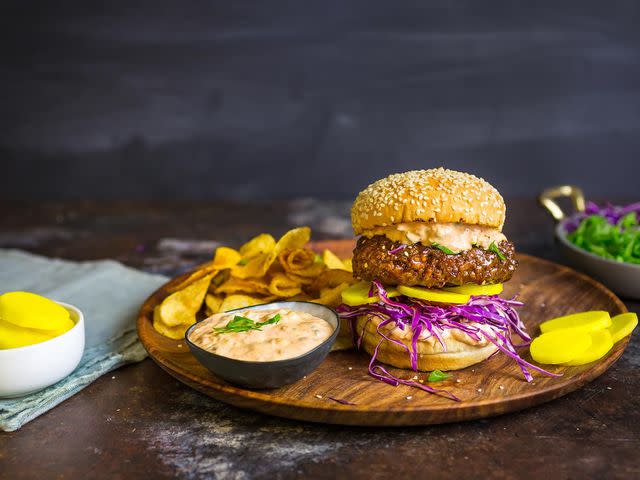
Serious Eats / Emily and Matt Clifton
Much like cucumber pickles, kimchi is a perfectly respectable and delicious burger topping. You could slap it on a plain cheeseburger and call it a day, or you could go a step further by brushing your patties with a slightly sweet soy glaze, in order to better complement kimchi's spicy, acidic punch. You can even whip up a flavor-packed blend of kimchi, scallions, sesame oil, sugar, and mayo, as we do for these Korean-inspired bulgogi burgers—it's as good with fries on the side as it is on the bun.
Mixing Up a Condiment
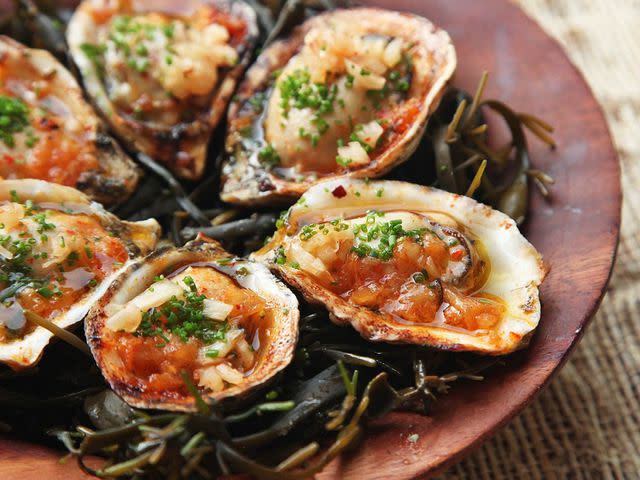
Serious Eats / J. Kenji López-Alt
That bulgogi burger topping points to one of my favorite uses for kimchi, which is to simply turn it into a multipurpose condiment. If all you do is stick an immersion blender into a jar of kimchi, you'll end up with a loose, salsa-like sauce that's great on grilled or braised meat, crudités, and more. Or, for something with a little more balance and richness, try making Kenji's equally versatile kimchi butter—originally designed as a topping for grilled oysters, but good for so much more. In the same vein, you can also use kimchi juice mixed with gochujang, butter, and honey to make a sweetly piquant dipping sauce for dumplings.
April 2017